
Malaysia
( 5 user reviews )Malaysia is a country in South-East Asia, located partly on a peninsula of the Asian mainland and partly on the northern third of the island of Borneo. West (peninsular) Malaysia shares a border with Thailand, is connected by a causeway and a bridge (the 'second link') to the island state of Singapore, and has coastlines on the South China Sea and the Straits of Malacca. East Malaysia (Borneo) shares borders with Brunei and Indonesia.
Understand
Malaysia is a mix of the modern world and a developing nation. With its investment in the high technology industries and moderate oil wealth, it has become a rich nation in South-East Asia. Malaysia, for most visitors, presents a happy mix: there is high-tech infrastructure and things generally work well and more or less on schedule, but prices remain more reasonable than, say, Singapore.
History
Before the rise of the European colonial powers, the Malay peninsula and the Malay archipelago were home to empires such as the Srivijaya, the Majapahit and the Melaka Sultanate. This was to change in the 16th century when the Portuguese established the first European colony in Southeast Asia by defeating the Melaka Sultanate.
Before World War II, the Malay Peninsula was governed by the British as the Federated Malay States (Selangor, Perak, Negri Sembilan and Pahang), which were governed as a single entitiy, the Unfederated Malay States (Johor, Kedah, Perlis, Terengganu and Kelantan), which were each governed as separate entities, and the Straits Settlements (Malacca, Penang and Singapore). Northern Borneo consisted of the British colony of North Borneo, the Kingdom of Sarawak, which was ruled by a British family known as the "White Rajas", and the British protectorate of Brunei.
After World War II, the Federated Malay States, Unfederated Malay States and the Straits Settlements of Malacca and Penang were federated to form a single British colony known as the Malayan Union, with Singapore splitting off to form a separate colony. In the Malayan Union, the sultans of the various states ceded all their powers except those in religious affairs to the British crown. However, widespread opposition to the Malayan Union led the British to reconsider their position, and in 1948, the Malayan Union was replaced by the Federation of Malaya, in which the executive positions of the sultans were restored. In Borneo, the White Rajas ceded Sarawak to the British crown, making it a crown colony of the United Kingdom.
Malaya gained independence from the British in 1957. The Union Jack was lowered and the first Malayan flag was raised in the Merdeka (independence) square on midnight 31st August 1957.
Six years later, Malaysia was formed in 1963 through a merging of Malaya and Singapore, as well as the East Malaysian states of Sabah (known then as North Borneo) and Sarawak on the northern coast of Borneo, with Brunei deciding not to join. The first several years of the country's history were marred by the Indonesian confrontation (konfrontasi) as well as the Philippines' claims to Sabah. Singapore was expelled from the federation on 9th August 1965 after several bloody racial riots, as its majority Chinese population was seen as a threat to Malay dominance, and became a separate country.
Today's Malaysia is a constitutional monarchy, nominally headed by the Paramount Ruler (Yang di-Pertuan Agong), who is "elected" by the sultans for a five-year term from among the nine sultans of the Malay states, though in practice the election follows a prescribed order based on the seniority of the sultans at the time of independence. This gives Malaysia a unique political system of rotational monarchy, in which each of the sultans would take turns to be the king of Malaysia. The current king, from Terengganu, was sworn in on 13 Dec 2006. In practice, however, power is held by the Prime Minister, who is the leader of elected government. The United Malays National Organisation (UMNO) party and its National Alliance (Barisan Nasional) coalition have ruled Malaysia uninterrupted since its independence, and while periodic elections are contested by feisty opposition parties, the balance has so far always been shifted in the government's favor by press control and use of restrictive security legislation dating from the colonial era.
Geography
The climate in Malaysia is tropical. The north-east monsoon (October to February) deluges Borneo and the east coast in rain and often causes flooding, while the west coast (particularly Langkawi and Penang) escape unscathed. The milder south-west monsoon (April to October) reverses the pattern. The southern parts of peninsular Malaysia, including perennially soggy Kuala Lumpur, are exposed to both but even during the rainy season, the showers tend to be intense but brief.
The terrain consists of coastal plains rising to hills and mountains. Peninsular Malaysia consists of plains on both the East and West coasts, separated from each other by a mountain range known as the Barisan Titiwangsa which runs from North to South.
People
Malaysia is a multicultural society. While Malays make up a 50.4% majority, there are also 23.7% Chinese (especially visible in the cities), 7.1% Indian and a miscellaneous grouping of 7.8% "others", such as the Portuguese clan in Melaka and 11% of indigenous peoples (Aborigines). There is hence also a profusion of faiths and religions, with Islam, Christianity, Buddhism, Taoism, Hinduism, Sikhism and even shamanism on the map.
Most notably in Malaysia, unlike in other countries, the Chinese community is not assimilated and has managed to maintain a distinct cultural identity from the rest of the population. Many traditional Chinese customs, including some no longer practised in China itself due to the cultural revolution, are widely practised by the Malaysian Chinese
Holidays
One of the significant characteristics of Malaysian culture is its celebration of various festivals and events. The year is filled with colorful, exhilarating and exciting activities. Some are religious and solemn but others are vibrous, joyous events. One interesting feature of the main festivals here is the 'open house' custom. This is when Malaysians celebrating the festival invite friends and family to come by their homes for some traditional delicacies and fellowship.
Multicultural Malaysia celebrates a vast range of festivals, but the ones to look out for nationwide are Islamic holidays, most notably the fasting month of Ramadan. During its 30 days, devout Muslims refrain from passing anything through their lips (food, drink, smoke) between sunrise and sunset. People get up early before sunrise for a meal (sahur), and take off early to get back home in time to break fast (buka puasa) at sunset. At the end of the month is the festival of Eid ul-Fitr, known locally as Hari Raya Puasa or Aidilfitri, when pretty much the entire country takes a week or two off to 'balik kampung' or return to their home towns to meet family and friends, this is the one time of year when Kuala Lumpur has no traffic jams, but the rest of the country does, and traveling around Malaysia is best avoided if at all possible. Another important festival is the Muslim festival of Eid ul-Adha, known locally as Hari Raya Haji or Aidiladha. It is during this festival that Muslims perform the Hajj or pilgrimage to Mecca. In local mosques, lambs donated by the faithful are sacrificed, and thier meat is distributed to all. These family reunions are also celebrated during other main festivals in the country. With people decked out in their traditional finery, these festivals are an integral feature of Malaysia society.
Non-Muslims, as well as Muslims traveling (musafir), are exempt from fasting but it is polite to refrain from eating or drinking in public. Many restaurants close during the day and those that stay open maintain a low profile. Business travelers will notice that things move rather more slowly than usual and, especially towards the end of the month, many people will take leave. The upside for the traveler is the bustling Ramadhan bazaars in every city and town, bustling with activity and bursting at the seams with great food. Hotels and restaurants also pull out all stops to put on massive spreads of food for fast-breaking feasts.
Other major holidays include Chinese New Year (around February), the Buddhist holiday of Wesak (around June), Deepavali, the Hindu festival of lights (around November) and Christmas.
Some uniquely Malaysian festivals of note include the Harvest Festival at the end of May each year and the 'Pesta Gawai' in early June, both thanksgiving celebrations held in East Malaysia.
Thaipusam is a Hindu festival that falls in January or February and is one of the must-see events. The largest procession in the country takes place at Batu Caves in Kuala Lumpur. Devotees carry decorated altars or kavadi up a flight of 272 steps towards the temple, all this while also having spears and hooks pierced through various parts of their bodies. This masochistic practice does not harm the devotees in any way! The ability is attributed to divine intervention and religious fervor.
Climate
Malaysia is close to the equator, therefore a warm weather is guaranteed. But like most Southeast Asia countries, Malaysia's sun-shining days are interrupted by Monsoon season from November and February every year.
Regions
Peninsular Malaysia (Malay: Semenanjung Malaysia) occupies most of the Malayan Peninsula between Thailand and Singapore, and is also known as West Malaysia (Malaysia Barat) or the slightly archaic Malaya (Tanah Melayu). It is home to the bulk of Malaysia's population, its capital and largest city Kuala Lumpur, and is generally more economically developed. Within Peninsular Malaysia, the West Coast is more developed and urbanised, and separated from the more rural East Coast by a mountain range.
-
West Coast - the more developed side of Peninsular Malaysia, with the states of Kedah, Malacca, Negeri Sembilan, Penang, Perak, Perlis and Selangor, as well as two Federal Territories; Malaysia's capital city Kuala Lumpur and the new administrative centre of Putrajaya, all located within this region.
-
East Coast - more traditional and Muslim, the islands here are glittering tropical jewels. Made up of the states of Kelantan, Pahang and Terengganu.
-
South - comprising just one state, Johor, two coastlines, and endless palm oil plantations.
Some 800km to the east is East Malaysia (Malaysia Timur), which occupies the northern third of the island of Borneo, shared with Indonesia and tiny Brunei. Partly covered in impenetrable jungle where headhunters roam (on GSM networks if nothing else), East Malaysia is rich in natural resources but very much Malaysia's hinterland for industry and tourism.
-
Sabah - superb scuba diving in Sipadan , nature reserves and the mighty Mount Kinabalu
-
Sarawak - jungles, national parks, and traditional longhouses
-
Labuan - a Federal Territory consisting of a small group of islands with excellent wreck diving sites nearby
Cities
Islands
Some of the most stunningly beautiful things about Malaysia are its tropical islands. And there's more to them than sun, sand and surf: particularly on the East Coast and Borneo's Sipadan there are coral reefs and hence excellent diving .
-
Labuan - offshore finance centre off the coast of East Malaysia, Borneo
-
Langkawi - An archipelago of 99 islands this is a destination known for its beaches, rainforest, mountains, mangrove estuaries and unique nature. It is home to some of Malaysia's most opulent resorts all the way through to very reasonable budget accommodation. It is a duty free port which makes for a great value destination.
-
Pangkor - fishing community and less well-known tourist destination off the west coast
-
Penang (Pulau Pinang) - former British colony known as the "Pearl of the Orient", and bustling island city with excellent cuisine
-
Perhentian Islands - glittering jewels off the East Coast still undiscovered by mass tourism
-
Redang Island - popular destination for scuba divers
-
Sipadan Island - remote scuba diving paradise at the easternmost tip of Malaysia
-
Tioman Island - once nominated one of the most beautiful islands in the world
National parks
There are various beautiful national parks in Malaysia. There are many different types of expeditions available, ranging from those where you hardly lose sight of the hotel to those were you are fully immersed in the jungle with only the guide and yourself if you are willing to pay the money! Tours vary from about 4 days to 2 weeks or more. It is very unlikely in most of the national parks for you to see a tiger or an elephant, this is only really likely if you are going to be staying for longer than a few days, i.e., for a couple of weeks at least. One of the most common forms of wildlife that you will encounter in the jungle however are definitely leeches! In the rainforest it is very very humid but actually it is not incredibly hot. This is because of the large amount of shade afforded by the canopy created by the interlocking trees. Shop around for deals of getting into the jungle and make your decision based on what type of person you are. If you are going to enjoy a lot of hiking without seeing any other people for days or even weeks then you can have that choice, alternatively you can have a much more 'packaged' tour in which you will probably stay in a very built up tourist town which has probably just grown out of the demand for people wanting to stay in the jungle.
-
Bako National Park, Sarawak - famed for its wildlife, especially bearded pigs and proboscis monkeys
-
Batang Ai National Park, Sarawak - the Iban heartland
-
Endau Rompin National Park, Johor
-
Gunung Gading National Park, Sarawak - home of the parasitic flower Rafflesia
-
Gunung Mulu National Park, Sarawak - fantastic limestones caves and karst formations
-
Kinabalu National Park, Sabah - home of 4095 metre peak Mount Kinabalu, the tallest mountain in Borneo.
-
Kubah National Park, Sarawak - home of the orang-utan and many other species of wildlife
-
Taman Negara National Park - the self-proclaimed World's Oldest Rainforest, spanning Kelantan, Pahang and Terengganu
Other
To escape from the muggy tropics, do as the English did and head up to the cooler highlands of West Malaysia.
-
Cameron Highlands — famous for its tea plantations
-
Fraser's Hill — a time warp to the colonial era
-
Genting Highlands — Malaysia's attempt at Las Vegas, the only place in the country where gambling is allowed
-
Kuala Kubu Bharu — a small town north of Kuala Lumpur, on the way to Fraser's Hill
Getting there
Most Western nationalities can enter Malaysia without a visa, and are normally issued 30, 60, or 90 day entry permit stamps.
Some nationalities that are not eligible to enter without a visa can get a tourist visa on arrival; other nationalities must apply for a visa in advance - see the Malaysian Ministry of Foreign Affairs website for the current scoop. If you need a visa to enter Malaysia and plan to visit Sarawak, state this when applying as a separate visa is required for Sarawak.
ASEAN nationals (with the exception of Myanmar) can enter and visit for up to a month without a visa; a visa is required for longer stays, except for Brunei and Singapore nationals.
Israel, Republic of Serbia and Republic of Montenegro nationals must obtain permission from the Ministry of Home Affairs in advance.
For people with Dual Citizenship (two passports), Malaysian immigration is pretty strict about this. It is advised that you exit your last port and enter into Malaysia with the same passport.
By plane
National carrier Malaysia Airlines (MAS) has extensive worldwide network coverage and regularly ranks high in airline quality assessments, while no-frills low-cost carrier AirAsia now covers an ever-expanding set of destinations including Australia, China, Cambodia, Hong Kong, India, Indonesia, Laos, Macau, the Philippines, Singapore, Sri Lanka, Thailand, the United Kingdom and Vietnam.
-
AirAsia +60 3 8775-4000 (hotline within Malaysia: 1-300-88-9933)
-
Malaysia Airlines +60 3 7846-3000 (hotline within Malaysia: 1-300-88-3000)
Most international flights land at Kuala Lumpur International Airport (KLIA) (IATA : KUL | ICAO : WMKK), although AirAsia flights use the LCC terminal, a 20km road transfer away from the main KLIA terminal. KLIA's predecessor, the Sultan Abdul Aziz Shah Airport (IATA : SZB | ICAO : WMSA) in Subang near Kuala Lumpur handles chartered and turboprop aircraft for regional operators Firefly and Berjaya +60 3 7846-8228 (ticketing only); +60 3 2145-2828. See the Kuala Lumpur *Get in* section for detailed airport information.
Other airports which have significant numbers of flights to regional destinations are Kota Kinabalu (Sabah), Kuching (Sarawak), Penang, Langkawi and Johor Bahru. Most major Malaysian cities have service to Singapore via AirAsia or Firefly. Berjaya Air also operates routes from Seletar Airport in Singapore to the popular dive spots of Tioman and Redang.
By train
A good example of the ups and downs in Malaysia-Singapore relations is the way immigration formalities for train passengers from Singapore to Malaysia are done. Both Malaysia and Singapore were handling immigration controls at Tanjong Pagar railway station until 1998 when Singapore moved its checkpoint to Woodlands station. Malaysia, however, refused to move, as doing so would have caused the country to lose its claim on the prime real estate on which Tanjong Pagar station sits in downtown Singapore. As such, Malaysian immigration checks are still conducted at Tanjong Pagar where passports are NOT stamped but merely "scanned" for entry into Malaysia. Passengers then proceed to Woodlands where they are stamped out of Singapore. Thus, you will never get a Malaysian entry stamp if you enter the country via train from Singapore. In the other direction, Malaysian immigration formalities are conducted on board trains in Johor Baru. Trains then cross the Causeway to Woodlands where Singapore immigration formalities are done.
-
To/from Thailand: Direct sleeper train services operated by the State Railway of Thailand connect Bangkok (Thailand) and Butterworth near Penang (Malaysia), while Keretapi Tanah Melayu (Malaysian Railways) runs trains between Hat Yai (Thailand) and Kuala Lumpur (Malaysia). Both trains cross the border at Padang Besar where Thai and Malaysia immigration formalities are all conveniently done in the station. There is also a less used eastern route from Hat Yai to Thai border town Sungai Kolok, but there are no through trains to the nearby Malaysian station at Wakaf Bahru (near Kota Bharu).
-
To/from Singapore: Singapore is the southern terminus of the Malayan Railway (Keretapi Tanah Melayu ) network. Comfortable overnight sleeper and somewhat misnamed daytime "express" trains connect Singapore with Kuala Lumpur and Tumpat, near Kota Bharu. Bizarrely, tickets purchased at the Singapore station are twice as expensive as those purchased in Malaysia; you can save quite a bit by taking the train from Johor Bahru instead. Another option is to at the cheaper rate, but you must book at least 48 hours in advance.
By bus
Long-distances buses/coaches into Malaysia run from Brunei, Indonesian Borneo, Singapore and Thailand. Please see the relevant city pages for more details.
-
Brunei - there are no direct buses into Brunei. However, there are buses from Miri and Limbang going to the border where there are connections to Bandar Seri Begawan.
-
Indonesia - direct buses operate between Pontianak in West Kalimantan and Kuching in Sarawak.
-
Singapore - a multitude of bus companies operate direct routes from Singapore to various destinations in Peninsular Malaysia, including Malacca, Kuala Lumpur, Penang, East Coast cities and even the Kuala Lumpur suburb of Petaling Jaya. Frequent buses make the short run between Singapore and Johor Bahru, and you can save a few bucks by changing at JB's Larkin terminal to a cheap domestic bus instead of taking a more expensive direct bus. If you are planning to take on arrival visa, you must enter Malaysia via link 2.
-
Thailand - several companies operate services from Kuala Lumpur and other cities in Malaysia to Hat Yai in southern Thailand, where direct connections are available to Bangkok and many other Thai destinations.
By road
Land crossings are possible from southern Thailand and Singapore into Peninsular Malaysia, as well as from Brunei and Kalimantan (the Indonesian side of Borneo) into Sarawak. An International Drivers Permit (IDP) is required. See the respective city or state pages for more detailed information.
-
Brunei - the main crossings are at Sungai Tujoh on the Miri, Sarawak, to Bandar Seri Begawan (Brunei) road, and the Kuala Lurah-Tedungan checkpoint which is used for traffic travelling between Bandar Seri Begawan and Limbang in Sarawak. You can also access the Temburong district of Brunei by road from Limbang via the Pandaruan (Puni on the Brunei side) checkpoint and Lawas via Trusan (Labu on the Brunei side).
-
Indonesia - the main crossing is at the Tebedu-Entikong checkpoint on the main Kuching-Pontianak road. Various other minor border crossings used by locals are not necessarily open to foreigners.
-
Singapore - the two crossings are the Causeway which links Johor Bahru with Woodlands in Singapore, and the Malaysia-Singapore Second Link which links Tanjung Kupang in Johor with Tuas in Singapore. See Johor Bahru *Get in* section and Singapore *Get in* section for more details.
-
Thailand - international checkpoints (with the Thai towns in brackets) include Wang Kelian (Satun) and Padang Besar (Padang Besar) in Perlis, Bukit Kayu Hitam (Sadao) in Kedah, Pengkalan Hulu (Betong) in Perak, and Rantau Panjang (Sungai Kolok) in Kelantan.
By boat
Ferries connect various points in Peninsular Malaysia with Sumatra in Indonesia and southern Thailand, Sarawak with Brunei, and Sabah with East Kalimantan in Indonesia and Mindanao in the Philippines. Luxury cruises also run from Singapore and sometimes Phuket (Thailand) to Malaysia.
-
Brunei - ferries daily between the Muara Ferry Terminal in Brunei and Labuan island and Lawas in Sarawak. Speedboats, mostly in the morning, also run between Bandar Seri Begawan jetty and Limbang, Sarawak.
-
Indonesia - the main jumping-off points from Indonesia are the Riau Islands of Batam, Bintan and Karimun; Dumai, Medan and Pekanbaru on the Sumatra mainland as well as Nunukan in East Kalimantan. Ferries link Batam with Batu Pahat and Johor Bahru;Bintan with Johor Bahru; Karimun with Batu Pahat and Kukup in Johor; Dumai with Malacca, Muar in Johor, Port Dickson (in Negeri Sembilan) and Port Klang, the port for Kuala Lumpur; Pekanbaru with Malacca; and Medan's port of Belawan with Penang. Daily ferries also link Nunukan with Tawau in Sabah. There are also minor crossings like between Bengkalis in Riau and Batu Pahat; Sumatra and Malacca and Muar in Johor; and Tanjung Balai Asahan in North Sumatra with Port Klang, the port for Kuala Lumpur.
-
Philippines - ferries run between the Zamboanga Peninsula and Sandakan, Sabah.
-
Singapore - daily passenger boats run between Changi Point and Pengerang, between Tanah Merah and Sebana Cover Resort, as well as between Changi and Tanjung Belungkor, all in Johor. See the Singapore *Get in* section for details.
-
Thailand - four ferries daily (reduced to three during Ramadan) between Tammalang at Satun and Kuah on Langkawi, Malaysia. Vehicle ferries operate between Ban Taba near Tak Bai in Narathiwat province and Pengkalan Kubur in Kelantan, Malaysia, while passenger boats run between Ban Buketa in Narathiwat province and Bukit Bunga in Kelantan.
On foot
You can walk in/out of Thailand at Wang Kelian and Padang Besar (both in Perlis), Bukit Kayu Hitam (Kedah), Pengkalan Hulu (Perak) and Rantau Panjang (Kelantan). However, crossing the Causeway on foot from Singapore is now illegal (Jan 2009).
Get around
By plane
Largely thanks to budget carrier AirAsia , Malaysia is crisscrossed by a web of affordable flights with advertised "promotional" prices starting at RM9 for flights booked well in advance. Flying is the only practical option for traveling between peninsular Malaysia and Borneo, as well as reaching some of the more remote outposts of Borneo. State carrier Malaysia Airlines also has competitive fares which now offers equal or even lower priced tickets if booked in advance through the internet, with sustaining class of hospitality. And their offshoot Firefly has a handy network radiating out of Penang previously, has also began operating from the Subang (Sultan Abdul Aziz Shah) airport.
Berjaya Air also flies small Dash-7 turboprops from Kuala Lumpur and Singapore to its own airports on the resort islands of Pangkor, Redang and Tioman. Prices are steep (from RM214 plus fees one way), but this is by far the fastest and more comfortable way of reaching any of these.
In Sabah and Sarawak, MASWings , operates turboprop services linking interior communities, including those in the Kelabit Highlands, with coastal cities. MASWings took over the rural air services network from FlyAsian Express on October 1, 2007, which in turn took the service over from Malaysia Airlines 14 months before that.
By train
Long-distance trains in Malaysia can rarely match road transport in terms of speed, but state operator KTMB provides relatively inexpensive and generally reliable services around Peninsular Malaysia (but not Sabah/Sarawak in Borneo). The main western line connects Butterworth (near Penang), Ipoh, Kuala Lumpur and Johor Bahru, while the eastern line runs through Gua Musang and the Taman Negara National Park to Kota Bharu, near the Thai border and the Perhentian Islands.
There are several train types and fare classes. First and second class are air-con, third class has fans instead. For sleeper trains, KTMB's epitome of luxury is Premier Night Deluxe (ADNFD - between Singapore and Kuala Lumpur only) featuring individual cabins containing two berths and a private shower/toilet unit. More economical are the Superior Night (ADNS) sleeper cars, which have upper and lower berths along each side, each bunk having a solid partition at each end and a side curtain for privacy. The carriages shake and rattle quite a bit but are comfortable and clean.
The Jungle Railway is a daily eastern line service which stops at every station (every 15-20 min or so) between Tumpat (close to the Thai border) and Gemas, including stops at Gua Musang, Kuala Lipis and Jerantut. It's 3rd class only, meaning no air-con and no reservations, and some stops may be lengthy as it's a single line and all other trains have priority - hence the "Jungle Train" waits in side loops along the way so that oncoming or overtaking trains can pass. Tourists may use this service to travel to Taman Negara National Park (Jerantut) or the Perhentian Islands (closest station to Kota Bharu is Wakaf Bahru). Some find it to be a fascinating and stunningly scenic ride; others feel there's not much to see when you're in the jungle.
Eastern line night trains (for which reservations are possible and recommended) also have 2nd class berths and seats, and some have 1st class sleepers too.
Tickets can be booked and even printed online at KTMB's site. Enquiries and reservations can be made by phone at KTMB's call centers +60 3 2267-1200 (Malaysia) or +65 6222-5165 (Singapore).
By car
Malaysia has an excellent highway network, culminating in the North-South Expressway from Singapore all the way to the Thai border. Petrol is slightly cheaper than market prices at RM1.80/litre (in Peninsular Malaysia, Sabah and Sarawak). Tolls are payable on expressways, but these are reasonably priced: driving the length of the country (734 km) from the Thai border to Singapore costs RM 108 (~US$25).
While driving habits in Malaysia are head and shoulders above most of the rest of Southeast Asia, they are still not necessarily great, especially if you are coming from a Western country. Traffic drives on the left. Beware of reckless motorcyclists, especially at night, and especially if you are a pedestrian: they typically disregard a red light for left turns, putting you at risk even though you cross the road with a green walk sign. As a motorist, at traffic lights, they will accumulate in front of you - let them drive away first to avoid accidents.
In general, cars and motorcycles rarely indicate line changes and often change from the far right to the far left at the very last minute, so always pay attention to what the cars ahead are doing or what they possibly could do!
Care is needed when driving in larger cities, such as Kuala Lumpur. Problems include apparently suicidal motorcyclists, massive traffic jams throughout the day, and bewildering roads especially in the older parts of the city where planning is virtually nonexistent. Out of town however, cars and motorcycles are the best and sometimes the only way to explore the country. Some of the more rural areas have motorcycles and scooters to rent for as little as RM25/day, a great way to explore the local area or larger islands like Langkawi. Most rental agencies will require a valid car drivers licence to be presented upon rental (or at least be told that it is at your hotel) - this is because the police make random checks, and the rental agency does not wish to be held responsible for renting out a vehicle to an unlicensed driver. Fuel levels are often compared before and after rental, as well as for damage, so make sure everything is documented, and request a refund of any excess fuel if possible.
Taxis are available in all cities and larger towns, although in smaller places you may have to call one (ask any shopkeeper). You will generally need to negotiate the fare in advance, even in notionally metered Kuala Lumpur, although prepaid coupon taxis are usually available at airports. RM5 should suffice for a short cross-town trip, while RM100 is enough to hire a taxi for a full day.
By bus
Bus drivers (especially on more "rural" routes) sometimes drive carelessly, speed like maniacs, overtake on blind corners, etc. The vast majority of journeys are problem-free but some horrific accidents attributed to reckless driving have, however, led to a crackdown and a nationwide hotline and SMS number for reporting these drivers/vehicles have been set up. These numbers are conveniently pasted on the back of every single large vehicle in the country.
The cheapest way to travel in Malaysia is by bus. All towns of any size have a bus terminal offering connections to other parts of the country. There are many companies of varying degrees of dependability, but two of the largest and more reliable are Transnasional and NICE/Plusliner . 24-seater "luxury" buses are recommended for long-distance travel.
If travelling on holidays or even over the weekend, it is advisable to reserve your seats in advance. Note that air conditioning on some buses can be extremely cold so don't forget to bring a good sweater, pants and socks, especially for overnight journeys on luxury buses!
Talk
The sole official language of Malaysia is Malay (Bahasa Malaysia or colloquially, Bahasa Melayu). Some parts of Malaysia near the Thai border, most notably Kelantan have dialects of Malay which are nearly incomprehensible to speakers of standard Malay, though most people in these areas will be able to converse in standard Malay if needed. English is also a compulsory subject in all schools and widely spoken in the larger cities although in rural areas a little Malay will come in handy. There is also a colloquial form of English spoken among Malaysians in urban areas, not inappropriately known as Manglish, which takes a bit of getting used to if you intend to join in the conversation on local topics. Malaysians will almost always try to speak 'standardized English' when approached by Western travellers. In general, police stations and government offices will have English-speaking staff on duty.
Arabic is taught to those who attend Islamic religeous schools, and many clerics as well as other very staunch Muslims will have a functional command of Arabic. However, it is not widely spoken, though the Malay language does have a large number of loan words from Arabic.
The Chinese community in Malaysia speaks a wide variety of Chinese dialects including Cantonese, Mandarin, Teo-chew, Hakka, Hainanese, Hok-chew and Hokkien. Mandarin is taught in most Chinese schools while Cantonese is commonly heard in the mass media, so most Malaysian Chinese would be conversant in both, regardless of their native dialect. The most commonly spoken Indian language is Tamil; others include Malayalam, Punjabi and Telugu.
In the northern states of Peninsular Malaysia bordering Thailand, there are various ethnic Thai communities, known locally as the Orang Siam, who speak various dialects of Thai. Malacca in the south is also home to a Portuguese community which speaks a Portuguese based creole. The remote forest areas of Peninsular Malaysia are also home to various tribal people known as the Orang Asli, who speak various indigenous languages such as Semelai, Temuan and many others. In East Malaysia several indigenous languages are also spoken, especially Iban and Kadazan.
See also: Malay phrasebook
See
Do
Malaysia has excellent scuba diving. The most popular spots are the islands off the East Coast of peninsular Malaysia (Perhentian, Redang, Tioman and many more), although the dive season is limited to April to September. However, the most famous dive site — often ranked among the best in the world — is Sipadan in at the easternmost tip of Malaysian Borneo, and there are many other less well known sites like Layang Layang.
Try whitewater rafting in Malaysia's many national parks, where you can find anything from tame Grade I to incredibly difficult and dangerous Grade V rapids.
Buy
The Malaysian currency is the ringgit, informally known as the dollar (the "$" symbol can be seen on older notes) and abbreviated RM or MYR, is divided into 100 sen. There are coins of 5, 10, 20, and 50 sen as well as bills of RM1, 2 (rare), 5, 10, 50 and 100. 5 sen coins are mainly given as change in large establishments and supermarkets, peddlers and street vendors might be reluctant to accept them. Note that the Singapore and Brunei dollars are also known as ringgit in Malay, so when near border areas you might want to check to be sure which currency they are quoting the price in.
Ringgits are freely convertible and the exchange rate is US$1 = RM3.6 (April 2009). Foreign currencies are not generally accepted, although you might get away with exchanging some US dollars or Euros even in more remote areas, but do expect a lot of stares and some persuasion. The major exception is Singapore dollars, which are accepted by KTMB and toll roads, but at a highly unfavorable 1:1 exchange rate (an anomaly dating back to when the ringgit was interchangeable with the Singapore dollar, prior to the 1970s).
Banks and airports are not the best places to exchange money if it is not urgent. Licensed money changers in major shopping malls often have the best rates - be sure to say the amount you wish to exchange and ask for the 'best quote' as rates displayed on the board are often negotiable, especially for larger amounts.
ATMs are widely available in cities, but do stock up on cash if heading out into the smaller islands or the jungle. Credit cards can be used in most shops, restaurants and hotels, although skimming can be a problem in dodgier outlets.
Banking
Banks in Malaysia, especially those in major towns and cities, have staff who are trained to handle international transactions. For any enquiries and transactions, get a number, sit down and wait for your turn to be served (There is no need to queue while you wait in air-conditioned comfort!).
Banks are open Monday to Friday from 9.30AM to 4PM and selected banks are open on Saturday from 9.30AM to 11.30AM except on the first and third Saturdays of each month. In the states of Kedah, Kelantan and Terengganu, they are open Saturday to Wednesday from 9.30AM to 4PM and Thursday from 9.30AM to 11.30AM.
Costs
Most visitors will find Malaysia quite cheap, although it is noticeably more expensive than Thailand to the north. You can live in hostel dorms and feast on hawker food for less than RM50 per day, but you'll wish to double this for comfort, particularly if travelling in more expensive East Malaysia. At the other end of the spectrum, luxury hotels and air fares are comparatively affordable, with even the fanciest 5-star hotels costing less than RM400/night.
Tipping is not customary in Malaysia. However, hotel porters and taxi drivers will appreciate a small tip if you have been provided with exemplary service. Most expensive restaurants, bars and hotels may indicate prices in the form of RM19++, meaning that sales tax (5%) and service charge (10%) will be added to the bill. Hotel tax of 5% may also be added to this.
Shopping
Kuala Lumpur is a shopping mecca for clothes, electronics, computer goods and much more, with very competitive prices by any standard. Traditional Malaysian fabrics (batik) are a popular souvenir. The cheapest place to easily buy ethnic souvenirs (especially wood-based) is in Kuching, East Malaysia, and the most expensive place is in the major, posh KL shopping centres.
In general shops open from 10.30AM till 9.30PM in the large cities. They open and close for business earlier in the smaller towns and rural areas.
Eat
The crossroads of Malay, Chinese and Indian cuisine, Malaysia is an excellent place to makan (eat in Malay). Look out for regional specialities and Nyonya (Peranakan) cuisine, the fusion between Malay and Chinese cooking. There is even unique Eurasian cooking to be found in the Portuguese Settlement in Malacca, the heartland of the Eurasian community of Portuguese descent.
Malaysians are very proud of their cooking and most towns or even villages have their own delicious specialities such as Penang char kway teow, Kajang satay, Ipoh bean sprout chicken, Sarawak laksa, Kelantanese nasi dagang, Sabahan hinava, and many, many more. Most of them rely on word of mouth for advertising and are frequently located in the most inconvenient, out-of-the-way places so you might want to try asking the locals for their personal recommendations.
Generally, you can eat pretty much anywhere in Malaysia. Food outlets are comparatively clean - the only thing you should avoid is ice for your drinks, when you frequent the street or hawker stalls since the blocks of ice used there might not be up to your hygienic standards. In actual restaurants this is not a problem. Also you might want to avoid ordering water from hawker stalls or the mamak restaurants as they are usually unboiled tap water.
Eating habits run the gamut, but most foods are eaten by fork and spoon: push and cut with the fork in the left hand, and eat with the spoon in the right. Noodles and Chinese dishes typically come with chopsticks, while Malay and Indian food can be eaten by hand, but nobody will blink an eye if you ask for a fork and spoon instead. If eating by hand, always use your right hand to pick your food as Malays and Indians traditionally use their left hand for dirty things like washing up after using the restroom. When eating with chopsticks at Chinese restaurants, take note of the usual ettiquette and most importantly, do not stick your chopsticks vertically into a bowl of rice. This is reminiscent of incense sticks burning at the temple and has connotations of wishing death on those around you. If eating in a group, serving dishes are always shared, but you'll get your own bowl of rice and soup.
Local delicacies
Malay cuisine
The Malays were Malaysia's original inhabitants and their distinctive cuisine is popular to this day. Characterized by heavy use of spices, most Malay dishes are curries, stews or dips of one kind or another and nasi kandar restaurants, offering a wide variety of these to ladle onto your rice, are very popular.
-
Nasi lemak (lit. "creamy rice") is the definitive Malay breakfast, consisting at its simplest of rice cooked in light coconut milk or coconut cream, some ikan bilis (anchovies), peanuts, a slice of cucumber and a dab of chilli on the side. A larger fried fish or chicken wing are common accompaniments. More often than not, also combined with a variety of curries and/or sambal (see below).
-
Rendang, occasionally dubbed "dry curry", is meat stewed for hours on end in a spicy (but rarely fiery) curry paste until almost all water is absorbed. Beef rendang is the most common, although chicken and mutton are spotted sometimes.
-
Sambal is the generic term for chilli sauces of many kinds. Sambal belacan is a common condiment made by mixing chilli with the shrimp paste belacan, while the popular dish sambal sotong consists of squid (sotong) cooked in red chilli sauce. Sambal ikan bilis, a common accompaniment to nasi lemak, consists of small dried fish with onions, chilli and sugar.
-
Satay are barbecued skewers of meat, typically chicken or beef. What separates satay from your ordinary kebab is the slightly spicy peanut-based dipping sauce.
-
Mee rebus is egg noodles served in some sweet chilli-based broth, usually with a slice of hard boiled egg and some lime.
-
Acar (achar) is thinly sliced vegetables and fruits (cucumber, carrot, pineapple) lightly pickled with vinegar, chilli and peanuts, a common side dish. Nowhere near as pungent as the Indian pickle of the same name.
Malay desserts, especially the sweet pastries and jellies (kuih or kueh) made largely from coconut and palm sugar (gula melaka, named after Melaka), bear a distinct resemblance to those of Thailand. But in the sweltering tropical heat, try one of many concoctions made with ice instead:
-
Bubur cha-cha consists of cubed yam, sweet potato and sago added into coconut milk soup. This can be served warm or cold.
-
Chendol is made with green pea noodles, kidney beans, palm sugar and coconut milk.
-
Durian is not exactly a dish, but a local fruit with distinctive odor you can smell a mile away and a sharp thorny husk. Both smell and taste defy description, but eating garlic ice cream next to an open sewer comes to mind. If you are game enough you should try it, but be warned beforehand — you will either love it or hate it. The rich creamy yellow flesh is often sold in street markets conveniently in pre-packaged packs, for anywhere from RM1 for a small fruit all the way up to RM50/kg depending on the season and type of durian. This 'king of fruits' is also made into ice cream, cakes, sweets and other decadent desserts. Note: You're not allowed to carry durians on public transport and they're banned from many hotels.
-
Ais kacang literally means "ice bean" in Malay, or in another name of ABC means Ais Batu Campur, is a good clue to the two major ingredients: shaved ice and sweet red beans. However, more often than not you'll also get gula melaka (palm sugar), grass jelly, sweet corn, attap palm seeds and anything else on hand thrown in, and the whole thing is then drizzled with canned condensed milk or coconut cream and colored syrups. The end result tastes very interesting — and refreshing.
-
Kuih (or kueh) refer to a plethora of steamed cake-like, mostly made with coconut milk, grated coconut flesh, glutinous rice or tapioca. They are often very colorful and cut into fanciful shapes, but despite their wildly varying appearance tend to taste rather similar.
Peranakan/Nonya cuisine
Many regional terms and the odd euphemism tend to crop up in notionally English menus. A few of the more common ones:
- assam
- tamarind (Malay)
- bee hoon
- vermicelli, thin white noodles made from rice (Hokkien 米粉)
- garoupa
- grouper, a type of fish (Portuguese)
- gonggong
- a type of conch (Chinese)
- hor fun
- very wide, flat rice noodles (Cantonese 河粉)
- kangkung
- water spinach, an aquatic vegetable (Malay)
- kway teow
- flat rice noodles (Hokkien 粿条)
- lengkuas
- blue ginger (Malay)
- mee
- thick egg noodles (Hokkien 麺)
- serai
- lemon grass (Malay)
- sotong
- squid/cuttlefish (Malay)
- spare parts
- offal such as liver, heart, gizzard
- tang hoon
- thin, transparent starch noodles (Hokkien 冬粉)
- gearbox
- 'knee' or shin part of cow
-
Chilli crab is a whole crab ladled with oodles of sticky, tangy chilli sauce. Notoriously difficult to eat but irresistibly delicious: don't wear a white shirt! For a less messy but equally tasty alternative, ask for black pepper crab.
-
Kaya is a jam-like spread made from egg and coconut, an odd-sounding but tasty combination. Served on toast for breakfast, canonically accompanied by runny eggs and strong, sweet coffee (kopi).
-
Laksa in Malaysia comes in many wildly different styles, and every state seems to have its signature style. Laksa lemak is a fragrant soup of noodles in a coconut-based curry broth, topped with cockles or shrimp, while Penang's assam laksa is made with a tamarind-infused broth instead of coconut, and has a spicy sourish taste. Kelantanese laksam, on the other hand, comes with wide, flat rice noodles and a very coconutty broth.
-
Mee siam is rice flour noodles served with sour gravy made from tamarind, dried shrimp and fermented beans. Usually served with tau pok (bean curd) cubes and hard boiled eggs.
-
Popiah or spring rolls come fresh or fried. They consist of boiled turnips, fried tofu, fried shallots and garlic, chopped omelette, chopped stir fried long beans and (optional) chilli sauce, wrapped in a thin rice skin covering and eaten like a fajita.
-
Rojak means a mixture of everything in Malay, and there are two very different types. Chinese rojak is a salad of pineapple, white turnip, cucumber, tau pok (fried bean curd) with thin tiny slices of bunga kantan (torch ginger flower buds), tossed in shrimp paste sauce and sugar, then sprinkled with crushed peanuts. Indian rojak consists of mainly fried fritters made from flour and various pulses with cucumber and tofu, with sweet & spicy sauces.
-
Satay bee hoon is rice vermicelli (bee hoon) served with the same peanut and chilli sauce used for satay, hence the name. Usually see hum (cockles), dried squid and pork slices are added in.
Besides these dishes, the Peranakans are also known for their kueh or snacks which are somewhat different from the Malay versions due to stronger Chinese influences.
Chinese cuisine
Chinese food as eaten in Malaysia commonly originates from southern China, particularly Fujian and Guangdong. While "authentic" fare is certainly available, especially in fancier restaurants, the daily fare served in hawker centres has absorbed a number of tropical touches, most notably the fairly heavy use of chilli and the Malay fermented shrimp paste belachan as condiments. Noodles can also be served not just in soup (湯 tang), but also "dry" (干 kan), meaning that your noodles will be served tossed with chilli and spices in one bowl, and the soup will come in a separate bowl.
-
Bak chor mee(肉脞麵)is essentially noodles with minced pork, tossed in a chilli-based sauce with lard, ikan bilis (fried anchovies), vegetables and mushrooms.
-
Bak kut teh (肉骨茶), lit. "pork bone tea", is a simple-sounding soup of pork ribs simmered for hours in broth until they're ready to fall off the bone. It's typically eaten with white rice, mui choy (pickled vegetables) and a pot of strong Chinese tea, hence the name — the broth itself doesn't contain any tea. To impress the locals, order some you tiao fritters from a nearby stall and cut them up into bite-sized chunks to dip into your soup. The port town of Klang is said to be original home of the dish.
-
Char kui teow (炒果条)is a favourite noodle type at Penang. Some flat egg noddle fried with soya source, prawn, clam, sprout bean & bak you (Pork's Oil).
-
Chee cheong fun (豬腸粉) is a favorite breakfast consisting of lasagna-type rice noodles rolled up and various types of fried meats including fishballs and fried tofu. The dish is usually topped with a generous amount of sauce.
-
Chwee kway (水粿) is a dish consisting of rice cakes topped with chai po (salted fermented turnips), usually served with some chilli sauce.
-
Fish ball noodles (魚丸麵) come in many forms, but the type most often seen is mee pok, which consists of flat egg noodles tossed in chilli sauce, with the fishballs floating in a separate bowl of soup on the side.
-
Hainanese chicken rice (海南鸡饭) is steamed chicken served with special gently spiced rice and tasty ginger and chilli dipping sauces. The chicken doesn't taste like much, the secret is in the rice and the sauces! Malacca and Muar, Johor have a variant in which the rice is cooked until it is sticky and made into a ball.
-
Hokkien mee (福建麵) refers to at least three separate dishes. In Kuala Lumpur, this gets you thick noodles fried in dark soy sauce, while in Penang you'll get a very spicy shrimp soup. Interestingly, neither of them bear any resemblance to the dish of the same name served in neighbouring Singapore.
-
Kway chap (粿汁) is essentially sheets made of rice flour served in some brownish soup, accompanied by a plate of braised pork and pig organs (usually intestines).
-
Lok-lok (乐乐) consists of skewers of fish, meat and vegetables, cooked in boiling broth and eaten with sauces.
-
Steamboat (火鍋), also known as hot pot, is do-it-yourself soup Chinese style. You get a pot of broth bubbling on a tabletop burner, pick meat, fish and veggies to your liking from a menu or buffet table, then cook it to your liking. When finished, add in noodles or ask for rice to fill you up. This usually requires a minimum of two people, and the more the merrier.
-
Wantan mee (雲吞麵) is thin noodles topped with wantan dumplings of seasoned minced pork. Unlike the soupy Hong Kong version, it is usually served dry.
-
Yong tau foo (酿豆腐) literally means "boiled tofu", but it's more exciting than it sounds. The diner selects their favorites from a vast assortment of tofu, fish paste, seafood and vegetables and they are then sliced into bite-size pieces, cooked briefly in boiling water and then served either in broth as soup or "dry" with the broth in a separate bowl. The dish can be eaten by itself or with any choice of noodles. Essential accompaniments are spicy chili sauce and a distinctive brown sweet sauce for dipping.
Indian cuisine
The smallest of the area's minorities, the Indians have had a disporportionately large impact on the culinary scene, with the mamak (Indian Muslim, see below) stall being a fixture in every Malaysian city. Authentic Indian food in Malaysia includes south Indian typical meals such as dosai, idli, sambar, and others, as well as north Indian meals including various curries, naan bread, and more. In addition, however, a number of Indian dishes have been "Malaysianized" and adopted by the entire population, including:
-
Fish head curry is, true to the name, a gigantic curried fish head cooked whole until it's ready to fall apart. The head itself is not eaten, as there's plenty of meat to be found inside and all around. Note that there are two distinct styles, the fiery Indian and the milder Chinese kind.
-
Nasi briyani is rice cooked in turmeric, giving it an orange colour. Unlike the Hyderabadi original, it's usually rather bland, although specialist shops do turn out more flavorful versions. It is usually served with curry chicken and some Indian crackers.
-
Roti canai is the local version of paratha, flat bread tossed in the air like pizza, rapidly cooked in oil, and eaten dipped in curry. Variations include include roti kosong (plain), roti telur (with egg) and murtabak (layered with chicken, mutton or fish), roti boom (with condensed milk) and roti tisu (made very thin like tissue paper).
-
Putu mayam is composed of some vermicelli-like noodles usually mixed with shredded coconut and some jaggery.
East Malaysia
East Malaysia, especially Sarawak, also offers a wide range of local dishes, but these are very rarely seen in peninsular Malaysia. See Sarawak for details.
Where to eat
The cheapest places to eat are hawker stalls and coffeeshops, known as kedai kopi in Malay or kopitiam in Chinese. Despite the name, these usually sell a lot more than coffee! Particularly popular and tasty are mamak stalls, run by Indian Muslims and serving up localized Indian fare like roti canai. Most hawker stalls stay open till late and some even operate on shifts so you can find the same stall offering different food at different points throughout the day. You can also do take away from any stall, just ask for bungkus (Malay) or ta pao (Chinese). A hawker meal will rarely cost you over RM5. Hygiene standards in Malaysia, while not up to that of neighbouring Singapore or Western countries, is still reasonable and much better than say, China or most of the rest of Southeast Asia. Just be observant, and generally speaking, if a stall is patronised by locals, it should be safe to eat there.
One step up on the scale is the kedai makanan or the more Western-style restoran. A type to look out for is the nasi kandar restaurant (also known as nasi campur or nasi padang), with a vast range of curries and toppings to ladle on top of your rice.
Seafood restaurants (makanan laut) are comparatively pricy but still excellent value by most standards; do check prices before ordering though. Local prawns are gigantic, Chinese-style steamed fish is a treat and crab served with sticky chilli sauce is particularly popular.
Last but not least, some less adventurous options. Food courts in shopping malls are a good way to sample local delicacies in air-conditioned comfort, paying only a small premium over hawker prices. And yes, you can also find McDonalds, KFC, Pizza Hut and the usual suspects plus imitators throughout Malaysia.
Dietary restrictions
Being a Muslim country, finding halal food in Malaysia is easy, but most Chinese restaurants are not halal — ask if in doubt. Meals at Malay restaurants and Western fast food restaurants like McDonalds, Kentucky Fried Chicken, Pizza Hut are halal. Restaurants at major hotels serve halal food. Generally local Muslims will eat at Western, Chinese and Indian eateries if there is a halal sign or a framed picture of Quranic verses on the walls at the payment counter. Most of the restaurants tend to display their halal certification or halal sign on their places.Halal certification was awarded and enforced by government agency usually JAKIM.
Vegetarianism is well understood and every restaurant will be able to come up with something on request, but don't rely entirely on menu descriptions: innocuous-seeming dishes like "fried vegetables" etc will often contain pork bits, shrimp paste (belacan), fish sauce etc. Indian restaurants usually have very good vegetarian selections, and purely vegetarian Chinese restaurants (often serving remarkable "mock meat" products made from tofu, gluten etc) are also not uncommon. Getting vegetarian food in rural areas, especially those near fishing villages, may be more difficult, but learning some basic Malay vocabulary will go a long way to help you get your message across — see the Malay phrasebook. Veganism is rarely understood in this part of the world and is largely mistaken as a synonym for vegetarianism.
Sleep
Budget
Budget hotels and youth hostels are available in most cities and around most tourist destinations. As with most budget accommodations, some are more reliable than others. Be cautious when selecting budget accommodation to avoid places that house illegal vice activities.
Larger cities will have YMCAs that are safe bets. Another noticeable budget hotel chain is Tune Hotels, an affiliate of the budget airline, Airasia. They are expanding and have hotels at numerous locations throughout the country
Mid-range
Mid range hotels are readily available just about anywhere. Prices of 3 to 4 star hotels are upwards from RM100 and are generally reliable in terms of quality.
Splurge
5 star hotels, service apartments and resorts are located in larger cities like Kuala Lumpur, Penang, Johor Bahru, Kota Kinabalu and Kuching. Also, almost all islands have upscale resorts and spas for the wealthy traveller.
Drink
Malaysians like both coffee (kopi) and tea (teh), especially the national drink teh tarik ("pulled tea"), named after the theatrical 'pulling' motion used to pour it. By default, both will be served hot, sweet and with a dose of condensed milk; request teh o to skip the milk, teh ais for iced milky tea, or teh o ais for iced milkless tea. Drinking with no sugar at all is considered odd, but asking for kurang manis (less sugar) will ease the pain.
Another peculiar local favourite is the kopi tongkat ali ginseng, a mixture of coffee, a local aphrodisiacal root, and ginseng served with condensed milk that's touted as an alternative to viagra and red bull combined and is usually advertised with a picture of a bed broken in half.
Other popular nonalcoholic options include the chocolate drink Milo and lime juice (limau). Freshly made fruit juices are also widely available, as well as a wide range of canned drinks (some familiar, some less so).
Topically and perhaps, rather un-PC, is a local drink comprised of white soya milk and black grass jelly (cincau) called a Michael Jackson and can be ordered at most hawker centre and local roadside cafes ("mamak")
Alcohol
Although Malaysia is a self-proclaimed Islamic country, alcohol is widely available on licensed outlet, however some states (notably Kelantan and Terengganu) ban alcohol. With the exception of tax-free islands (Labuan, Langkawi, Tioman) and duty free shops (for example in Johor Bahru), prices are comparatively high, with a can of beer costing RM7.50 or more even in supermarkets or 7 elevens. However, in East Malaysia, smuggled liquors are widely available.
In East Malaysia, particularly Sarawak, tuak is a common affair for any celebration or festivals such as Gawai Dayak and Christmas Day. Tuak is made from fermented rice which sometimes sugar, honey or other various condiments are added. It is normally served lukewarm without ice. Visitors can choose from 'strong' flavour of tuak (which is normally being fermented for years), or 'mild' flavour (which sometimes just being prepared a week or even a day before). Tuak in Kelantan is also can be considered as a liquor since that it contains trace amount of fermented nipah or sap juice. The alcohol content in Kelantan tuak can easily reach 50% after 3 days from the time it was extracted.
Learn
Malaysia's universities are generally well-regarded and draw exchange students from near and far.
-
University Teknologi Malaysia (UTM), University Teknologi Malaysia is one of the Malaysian Universities, specializing in engineering and techology.
-
University of Malaya (UM), . Malaysia's oldest university. It is widely recognised as the top university in Malaysia, and many prominent Malaysians are alumni of UM.
-
Universiti Putra Malaysia (UPM), . Formerly known as Universiti Pertanian Malaysia is among the oldest in Malaysia. Used to focus on agriculture sector but now is the leading universiti in Malaysia in the field of biology, medical science and biotechnology. The only universiti in Malaysia that offer vetenarian degree.
-
Universiti Sains Malaysia (USM), . The second university in Malaysia, more geared towards technical studies and it is one of three universities in Malaysia that have been identified as research-intensive universities in Malaysia.
-
Universiti Malaysia Sarawak (UNIMAS), . Focused on Tourism, Biotechnology and Information Technology, has a strong relationship with Australian universities.
-
Multimedia University, . Malaysia's first private university. Engineering and information technology.
-
International Islamic University of Malaysia (IIUM), . Private publicly-funded university in Malaysia, sponsored by eight different governments from the Organization of the Islamic Conference (OIC).
-
Universiti Kebangsaan Malaysia (UKM), . The third public university formed in Malaysia, but the first to use Bahasa Melayu, as the medium of instruction.
-
Universiti Kuala Lumpur (UniKL), . Malaysia's private university. Focused on engineering technology and information technology.
-
Limkokwing University of Creative Technology is Malaysia's premier private university for an education in creative technology. It has one of the most international student populations in the country.
-
Universiti Utara Malaysia (UUM), . It is one of the famous Management School for tertiary education in Malaysia which is located in the northern Peninsular Malaysia at Sintok, Kedah. This campus comprises more than 21,000 of undergraduates.
In addition to this, several foreign universities have established campuses in Malaysia, providing the opportunity for foreign education in a Malaysian atmosphere. Among them are Monash University, Swinburne University of Technology and Nottingham University.
Work
Obtaining a working visa takes some effort. The easiest way to work in Malaysia is probably to work for an overseas company and get posted to Malaysia. The Malaysian Immigration Department website has basic advice. In order to obtain a work permit, you need to have an offer from your future employer who will have to do the paperwork for you. It's very expensive and comes with many restrictions if a company wants to hire a foreigner and as such next to impossible. As stated above, a feasible way is to get transfered. Finding a job is otherwise unlikely unless you are getting married to a local and even then it remains difficult.
Stay safe
Central emergency number 999
All things considered, Malaysia is a very safe country, but crime levels are on the rise, so common sense precautions should be observed.
Crime
Pickpockets and snatch-and-run thieves ply their trade in large cities like Kuala Lumpur and Johor Bahru. Be particularly careful when it comes to snatch-and-run thieves as some of them are known to drag victims along the road with their motorcycle until they release their grip on their possessions. As a general precaution, always carry your bags on the side not facing the road and walk against the flow of traffic.
Travel documents and valuables are best deposited in a hotel safe or carried safely with you, as there is a potential of theft from hotel rooms while guests are away.
Credit card fraud can be a problem, so use plastic only at large, reputable retailers, and do not let your card out of sight.
Do not accept drinks from strangers in any pub or club as there is a risk they might be spiked. Gambling is illegal and tourists are often scammed at illegal gambling joints.
Never bring any recreational drugs into Malaysia, even if you are only there for transit. Possession and/or trafficking of even minute amounts can lead to a mandatory death sentence.
Traffic safety
Drunk driving is a serious offence and breathalyser tests by the police are common.
Police in Malaysia are known for asking for and accepting bribes on traffic stops. This is accepted among locals, and a fair amount of traffic violations will be ignored for a fee (usually between RM 50-200 depending on severity). Do not be alarmed if you are asked for money, but if possible let your host do the talking. It is best practice to pay the officer what they want and not ask any questions, as a disgruntled officer can create issues for you and your host. Note that this is generally restricted to traffic stops, and you should not offer bribes in other situations, especially with government officials or customs agents.
When on foot, be careful when crossing the street. Vehicles will often ignore pedestrian (zebra) crossings.
Other
Many if not most taxis will refuse to use the meter, although you are far more likely to get a metered taxi by flagging one at a street than a taxi stand. While understandable — official rates are often years behind inflation — you have to bargain, as the initial asking price may be grossly inflated. If using a taxi late at night, it is best to use the dial-a-taxi service as there have been incidents where taxis flagged down during those hours being fake/unregistered. The unregistered taxi driver might then rob or assault their victims with the help of assailants.
Public demonstrations are uncommon in Malaysia, but should one occur it may be dealt with in a heavy-handed manner, so avoid them at all costs. Especially if you are not Malaysian citizen or permanent resident as you could even get in trouble with your own country, if it has good relations with Malaysia.
Stay healthy
Tap water is drinkable in some areas and not others, but even locals boil or filter it first just to be on the safe side. When travelling it is best to stick to bottled water, which is very inexpensive.
Ice in drinks might be made from tap water but nowadays, most restaurants and even roadside stalls use the cylindrical variety with a hollow tube down the middle that are mass-produced at ice factories and are safer to consume.
Heat exhaustion is rare, but do consume lots of fluids, use a hat and sunscreen and shower often!
Peninsular Malaysia is largely malaria-free, but there is a significant risk in Borneo especially in inland and rural areas. Dengue fever occurs throughout Malaysia in both urban and rural areas, and can only be avoided by preventing mosquito bites. The mosquito that transmits dengue feeds throughout the daytime, and is most active at dawn and dusk. If you experience a sudden fever with aches and lethargy, seek medical attention immediately. Aspirin and ibuprofen should not be used until dengue fever has been ruled out. Mosquito repellents (ubat nyamuk) are widely available. Be careful with mosquito coils, which can easily start fires: set them on a plate or other non-flammable surface and extinguish them before going to sleep.
Haze from burning vegetation in neighbouring Indonesia may come and go without warning from the months of May to August so travellers with respiratory ailments should come prepared.
Most public washrooms make a small charge (generally between RM0.20-RM2.00, usually depending on the standard of the facilities) so keep some loose change to hand. If the condition of the sitting toilets is questionable, use the squatting toilets instead - both are usually available, and some believe that the latter are more hygienic and (if you can get used to them) are just as easy to use as sitting toilets.
Malaysia is largely free from earthquakes as there are no nearby faultlines, though tremors can occasionally be felt when a major quake occurs in neighbouring Indonesia. Typhoons also generally do not occur. However, the Nov-Jan monsoon season often results in flooding due to torrential rains, and landslides are known to occur, most notably on the East Coast. Tsunamis are a rare occurence, though Penang and a few islands on the north of the West Coast were hit by the famous tsunami in 2004.
Government health care facilities are cheap but basic, and many visitors prefer to seek out private medical care. Private medical costs can be high and having travel insurance is a very good idea.
Respect
As in any predominantly Muslim country, you should dress respectfully, particularly in rural areas (wearing trousers not shorts and covering your shoulders is recommended but not essential). In more metropolitan areas such as Kuala Lumpur, as well as towns and cities such as Penang and Ipoh with a larger non Muslim population, attitudes are more liberal.
As a tourist, it is best not to criticize the Government and especially the Malay royal families.
When entering a home or a place of worship, always take off your shoes. Also, never eat with your left hand, or give a gift with your left hand; and never point with your forefinger (you may use a closed fist with the thumb instead), point the bottoms of your feet at a person or touch a person's head.
Public showing of affection in larger cities is tolerated but might invite unnecessary attention from the public. In more rural areas it is frowned upon and is to be avoided.
Same-sex relationships is a taboo subject in Malaysia. Gay and lesbian travellers should avoid any outward signs of affection, including holding hands in public. Likewise, due to strong influence of Islam, homosexuality is technically illegal.
Contact
Internet
Connecting to the Internet in Malaysia is easily accessible in most cities and towns. Malaysia's Internet Service Providers offer affordable unlimited broadband services throughout Malaysia. Therefore broadband Internet is available in most hotels, Internet cafes, and some restaurants. Wireless broadband (WiFi) is usually available in hot spots such as fast food restaurants & large shopping centres. Prepaid Internet cards are also available to access wireless broadband, in some cafes.
Customers usually pay RM2.50 to RM5.00 per hour for Internet services in the cybercafe (depending on which city you're in) and Internet connections offered in restaurants and cafes are usually free. Typically, going to all Starbucks outlets garners you free WiFi access, while asking nicely at the Coffee Bean chains, also seems to get you a pass.
Telephone numbers
The country code for Malaysia is 60.
Landlines
Malaysian landline telephone numbers have either seven or eight digits. The country is also divided up into areas which have been assigned two or three digit area codes, which have to be dialled when calling from outside the area. The area codes are:
-
03 - Kuala Lumpur, Putrajaya, Selangor
-
04 - Kedah, Penang, Perlis
-
05 - Perak
-
06 - Malacca, Muar district of Johor, Negeri Sembilan
-
07 - Johor (all districts except for Muar)
-
082 - Sarawak (Kuching and Samarahan districts)
-
083 - Sarawak (Sri Aman and Betong districts)
-
084 - Sarawak (Sarikei, Sibu and west Kapit districts)
-
085 - Sarawak (Miri and Limbang districts)
-
086 - Sarawak (Bintulu districts and Belaga)
-
087 - Sabah (Interior Division)
-
088 - Sabah (West Coast and Kudat Division)
-
089 - Sabah (Sandakan and Tawau Division)
-
09 - Kelantan, Pahang, Terengganu
Area code 02 has been assigned for calls made from Malaysia to Singapore. This means there's no need to call Singapore's country code 65 when calling from Malaysia. International direct dialing (IDD) calls from landlines to all other countries should use the prefix 00 followed by the country code.
To call a Malaysian number:
-
From overseas dial the international access code, the country code for Malaysia, the area code without the "0", and then the phone number.
-
From outside the local area dial the full area code, followed by the phone number. There are no exceptions to this rule, except when using a mobile phone.
-
From within the local area just dial the phone number without any code.
Mobile phones
Malaysia also has four mobile telephone service providers, Maxis , DiGi , Celcom , and U Mobile which utilise codes 012, 013, 014, 016, 017, 018, 019. Mobile number portability has been implemented in Malaysia, meaning a code like 012 that traditionally belonged to Maxis, can now be a DiGi subscriber. Mobile networks utilize the GSM 900 and 1800 systems. 3G (WCDMA), EDGE & HSPDA networks available in larger towns. International roaming onto these networks is possible if your operator allows it.
To call a Malaysian mobile number:
-
From overseas dial the international access code, the country code for Malaysia, the mobile telephone provider's code without the "0", and then the telephone number.
-
From within Malaysia dial the provider's code with the "0", and then the telephone number.
-
From mobile phone to mobile phone within Malaysia dial the provider's code with the "0", and then the telephone number. Although you can drop the provider's code if the two phones share the same provider, you will still get through if the provider's code is dialled.
To call from Malaysia to another country:
-
From a landline dial the international access code "00" followed by the country code and the phone number. For example, dialing the United States from Malaysia you would dial 001 followed by the US area code and phone number.
-
From a mobile phone same as from a landline (above). An alternative, and simpler, approach on many mobile phones is to press & hold the zero button to enter a "+" (plus sign) before the country code and phone number. The "+" represents (in any country) the appropriate international access code.
Postal services
Many international courier services like Fedex, DHL and UPS are available in towns and cities but the main postal service provider is Pos Malaysia which reliably provides postal services to most countries in the world.
Non-urgent letters and postcards can be dropped in postboxes inside post offices or red postboxes found outside post offices and along main roads. If there are two slots in a postbox use the one that says "lain lain" for international post.
Post offices are open from 8AM to 5PM daily except Sundays and public holidays, although a few in Klang Valley stay open till 10PM. In the states of Kedah, Kelantan and Terengganu they are closed on Fridays and public holidays.
Contact & location
5 Reviews
I liked
Very up to date article. It so helpful for visitors around the world to get to know Malaysia well.I disliked
NothingI liked
I like the review about my country. Accurate and informative. I love my country and I hope with the information given. Tourist around the world will come more often here. I do hope to have a chance to visit other country too.-especially europe. I done my visit to neighboring country like Singapore, Indonesia and Thailand and China. Will soon visit Vietnam.I disliked
NothingI liked
I like the information about Malaysia.the fact is true and also specified.that's why i proud to be tanker man in factory of product aluminium billet and ingots.vavaaaaaahhhhh stay you on spot right now!!!!! and get the magic of BUTOK BESELEIEK you know that.I disliked
NothingI liked
i lav Malaysia .. lot of food .. information given really2 impressive .. because it really2 like Malaysian .. we eat everything we want or how we want that food be .. we do everything we want .. sumtim , we done bad thing also .. if u stayin in KL , u can go many tourism attraction near u .. we got highland , beaches , park , zoo , museum , malls in KL or few km from KL .. not bad .. quite interest being there ..I disliked
NothingAdd your review
The photos displayed on this page are the property of one of the following authors:
Kevin Poh, Brian Jeffery Beggerly, Badz Manaois, bob|P-&-S, Phil's World Travel, Kok Leng Yeo, Gemma Longman, Will Ellis
Some photos courtesy of:
 . The photos provided by Flickr are under the copyright of their owners.
. The photos provided by Flickr are under the copyright of their owners.
This travel guide also includes text from Wikitravel articles, all available at  View full credits
View full credits
Liz, Ravikiran Rao, Colin Charles, omar sharif, Peter Fitzgerald, woo sau wei, Tony Chang, cz, Susan, Anwarul Adzizi, Lance Chua, R. Quinn, alayna, Leong Shen-li, David, hody liew, Stephen Atkins, Bob Low, GOH Tat Kean, ahli chung, Idjea Dumpit, Johny Canal, Beh Kea Chang, Todd VerBeek, Peter Tan, Ryan Holliday, Andrew Haggard, Colin Jensen, E C Tan, Christopher Rayan, mayee, Evan Prodromou, Thanneermalai L, burdallet, Zeno Gantner, Boyo, Yann Forget and Michele Ann Jenkins, Wikitravel user(s) Pashley, Graham87, ChubbyWimbus, Inas, Tatatabot, AHeneen, Dark Paladin X, Foox, Lorenzoitaly, Superdog, Eunice, Episteme, Zack2007, Huttite, Hkpatv, Wiyang, Nzpcmad, Bijee, InterLangBot, Malbear, Jason g haines, Dzof, Nils, Akubra, Fuzheado, Nurg, Acraddock and CIAWorldFactbook2002
This travel guide also includes text from Wikipedia articles, all available at  View full credits
View full credits
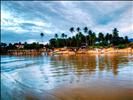
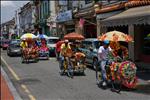
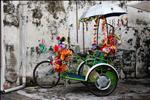


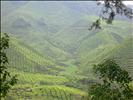
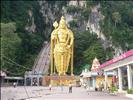
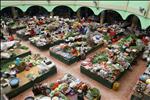


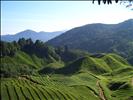

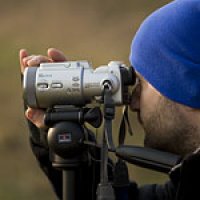
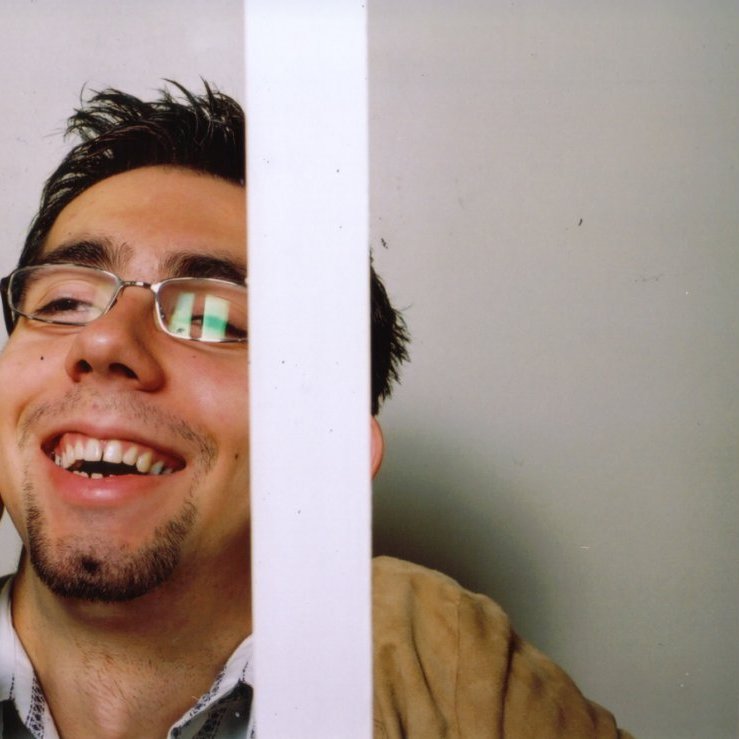

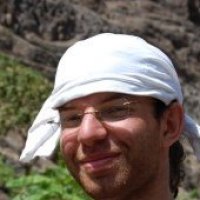





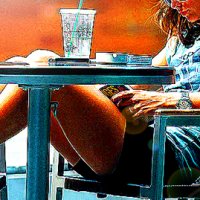





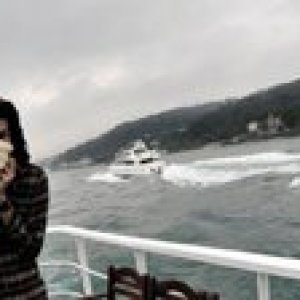


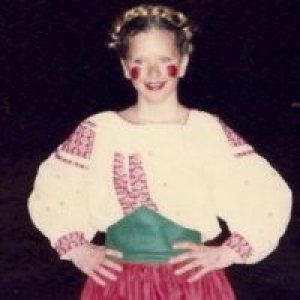
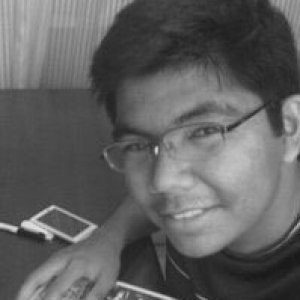




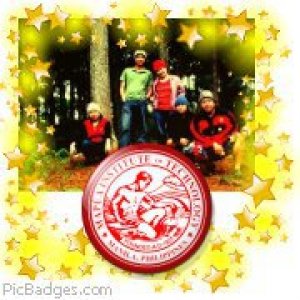

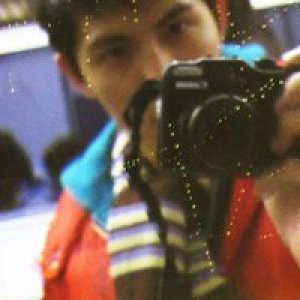


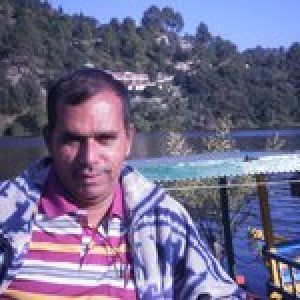
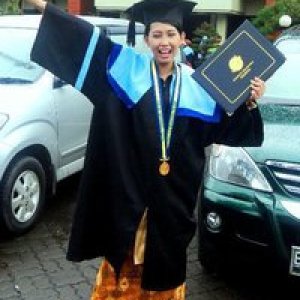
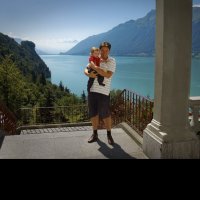

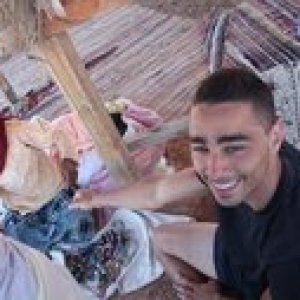
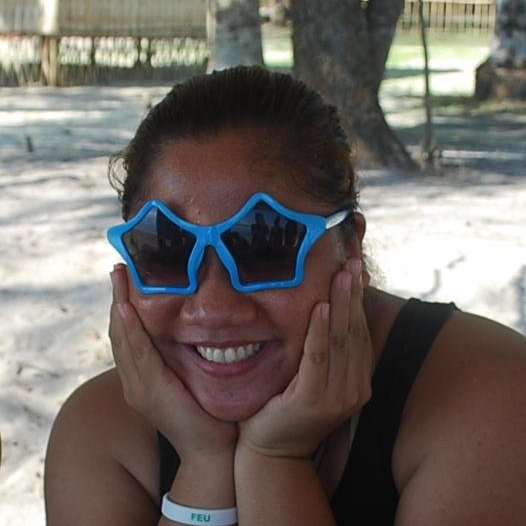
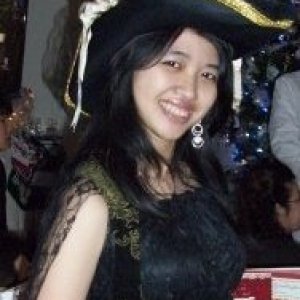
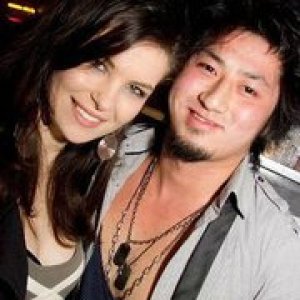
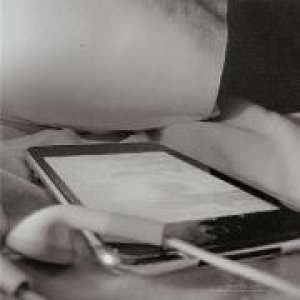
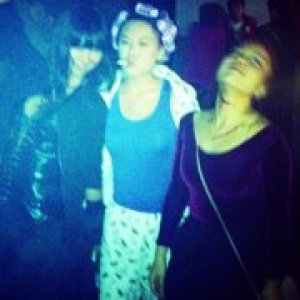



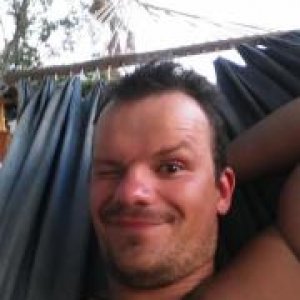
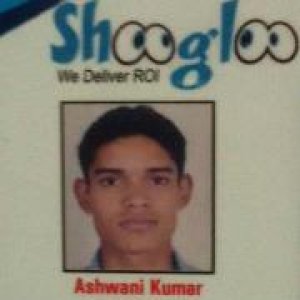







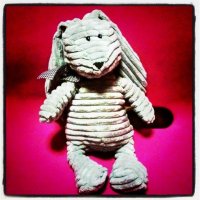

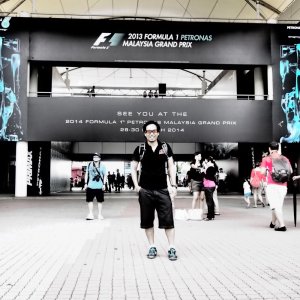


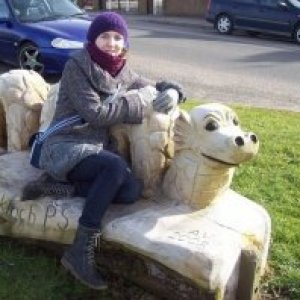


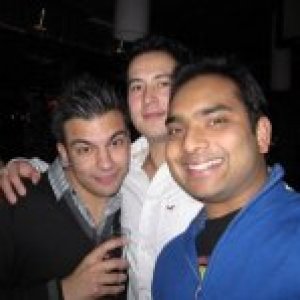

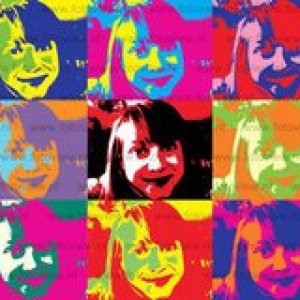





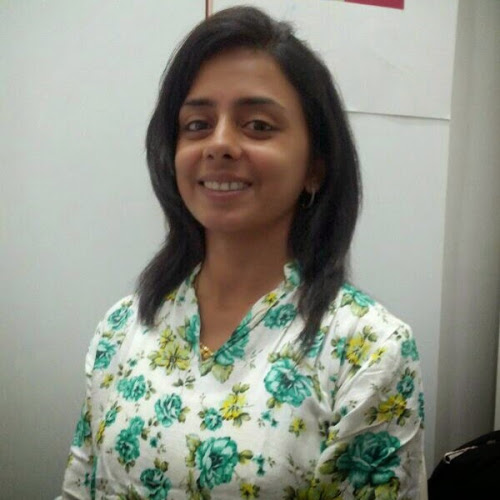


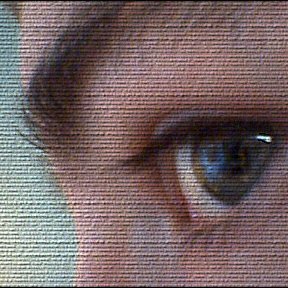
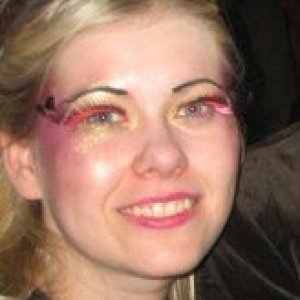

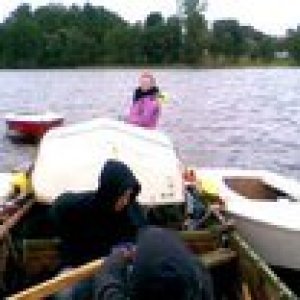
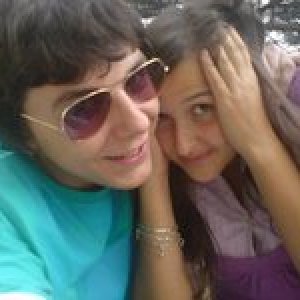
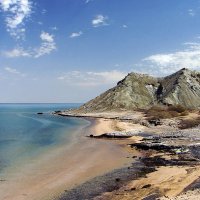

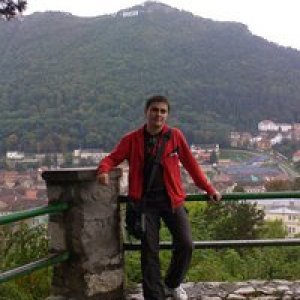






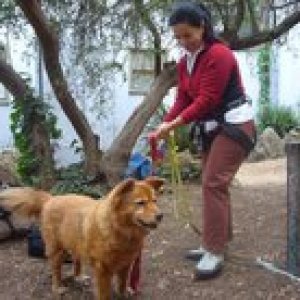
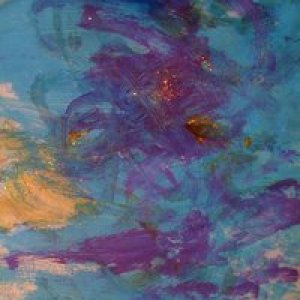
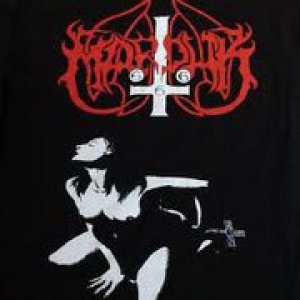

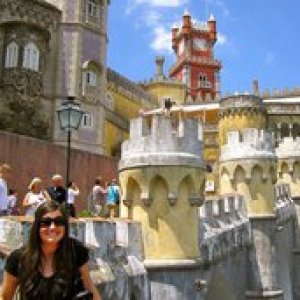







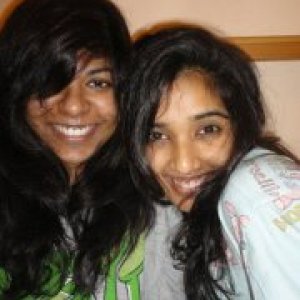










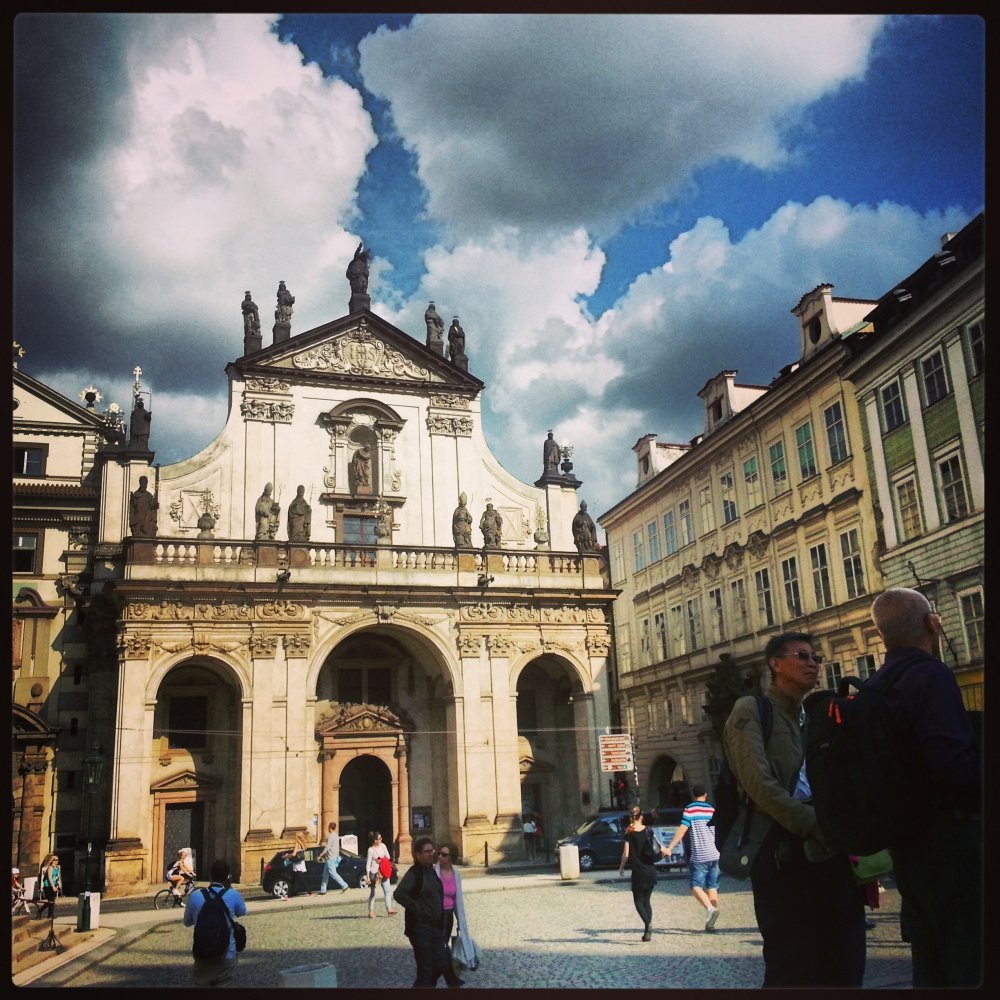

I liked
i really like the informations given for I am a Malaysian..I'm proud to be Malaysian and I will be happy to show my homeland to the world..I disliked
Nothing